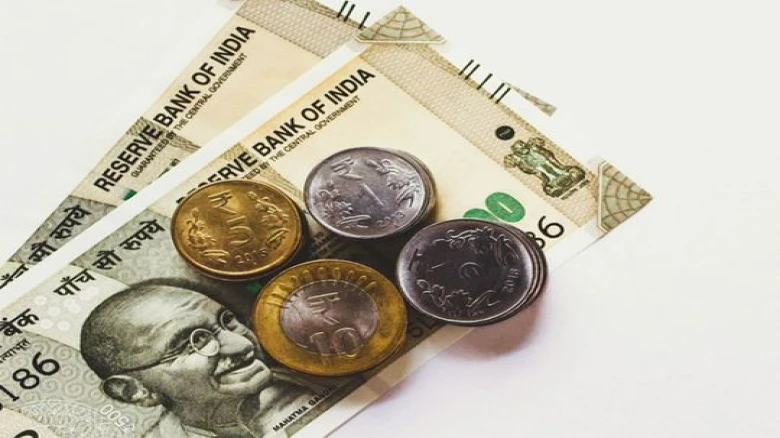The domestic currency recovered 25 paise to close provisionally at 82.75 against the...
Digital Desk: The rupee recovered to below 83 against a resurgent dollar, aided by the Reserve Bank of India's intervention after the domestic currency fell significantly to an all-time low of 83.29, pushed mostly by a worldwide sell-off in risk assets in a see-saw session on Thursday.
Bloomberg showed the rupee was last changing hands at 82.7538 per dollar after opening at 82.9825 and crashing to a new record low of 83.2925.
The domestic currency recovered 25 paise to close provisionally at 82.75 against the US dollar, with fag-end buying in domestic equities also boosting sentiment.
"After hitting a lifetime low of 83.2325, the rupee reversed to dip below 83/$. Currently trading at 82.85 as the RBI sold dollars in the open market to smoothen out the process of the currency's sharp depreciation," said Anil Kumar Bhansali, Head of Treasury at Finrex Treasury Advisors.
Reuters reported that the rupee-to-dollar exchange rate was last at 82.86, down from 83.0200 the previous day. Early in the session, the local unit hit a new low of 83.2625.
The RBI was selling dollars and engaging in buy/sell swaps as the rupee fell to a new record low, traders said who spoke to Reuters.
According to analysts, the RBI has recently interfered through advance dollar sales rather than spot transactions because the central bank was likely preserving spot reserves in order to prevent its intervention damaging the rupee's liquidity.
According to Reuters, the rupee might fall below 84.50 by December.
In the previous session, the domestic currency had reversed sharp gains from earlier on Wednesday to close at its weakest level of 83.02 per dollar, driven by the RBI likely buying dollars at about 82 in currency futures to buffer up its capacity to intervene.
The rupee's fall was exacerbated by broad dollar strength and stop losses at 72.40, a level likely protected by the RBI.
"Yesterday, the rupee's weakness was caused by probable dollar buying at 82.02 by the RBI in currency futures and outflows of large size of about $500 million from Gas Authority of India Limited (GAIL) and Mangalore Refinery and Petrochemicals Limited (MRPL)," Bhansali said.
"The RBI did not protect 82.40, and short covering of the pair took it to 83.00, with stop losses triggered between 82.40 and 83.50," he added.
Separately, the dollar's appeal rose, driven by additional signs that strong inflation will keep major central banks in rate-hike mode after British inflation reached 40-year highs.
The recent rally in global risk assets was limited by a spike in US Treasury yields on anticipation that the Federal Reserve would keep raising interest rates quickly.
The shocking inflation figures from this week from Canada, Britain, and New Zealand also showed that central banks throughout the world are still struggling to contain decades-high inflation, despite slowing economic growth, mounting recession worries, and rising demand for safe-haven assets.
On Thursday, the dollar crossed the landmark 150-yen line for the first time since 1990, aided by Treasury rates that were trading at multi-year highs and keeping markets on high alert for intervention from Japanese authorities.
Moves in the other major currencies were more restrained, with the euro at $0.9786 and the pound continuing to fall. The euro was still attempting to regain ground lost during the previous day's dollar advance.
As of Wednesday's close, the frail Japanese yen had lost ground for 11 consecutive sessions and had already re-entered 32-year lows six times.
"As long as the terminal point of the US interest rate remains unclear, dollar strength will not subside. 150 was just a pass point, and the focus now is on if it tops 160," Takumi Tsunoda, Senior Economist at Shinkin Central Bank Research Institute in Tokyo, told Reuters.

Leave A Comment